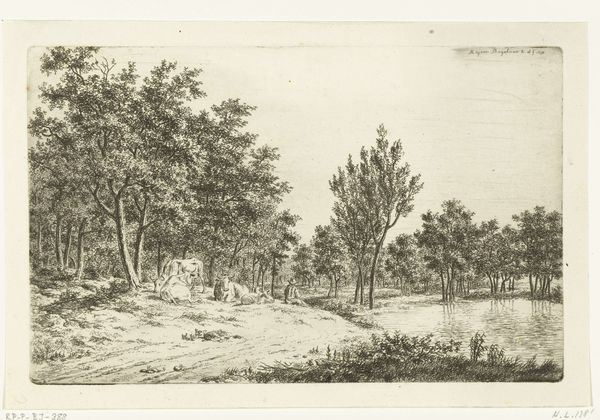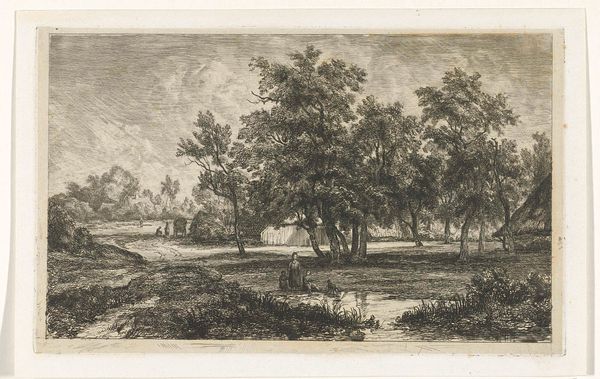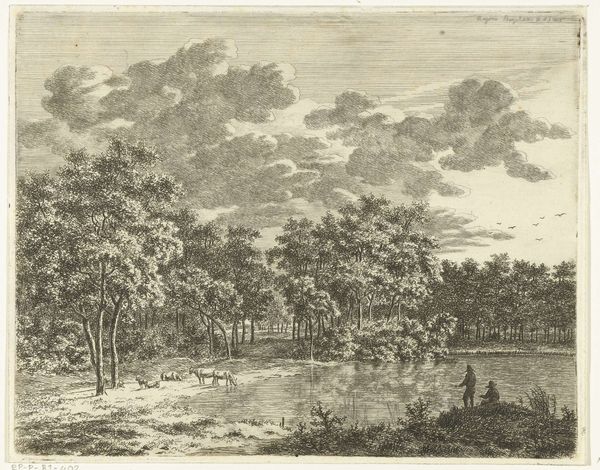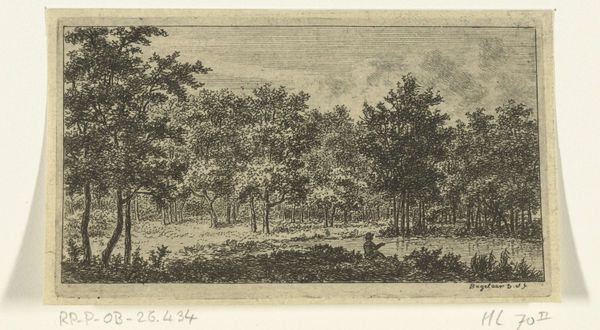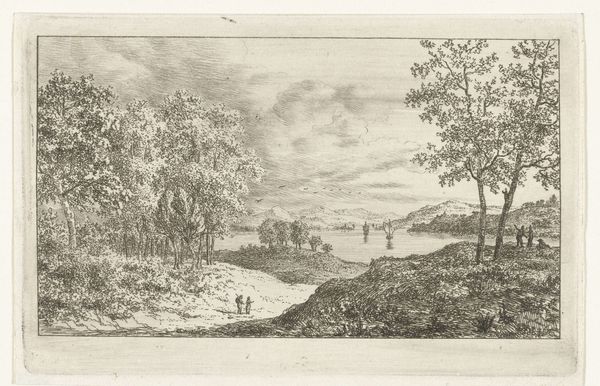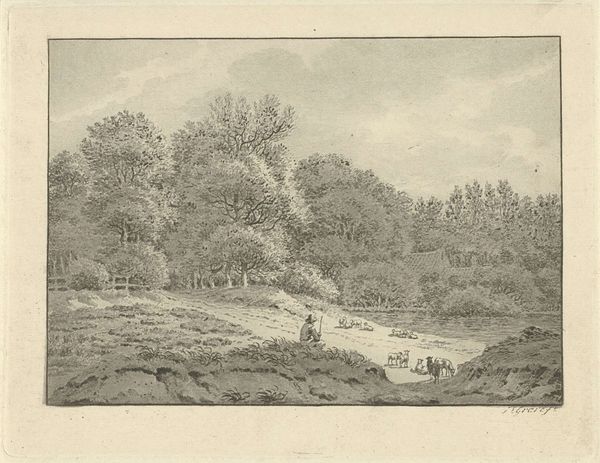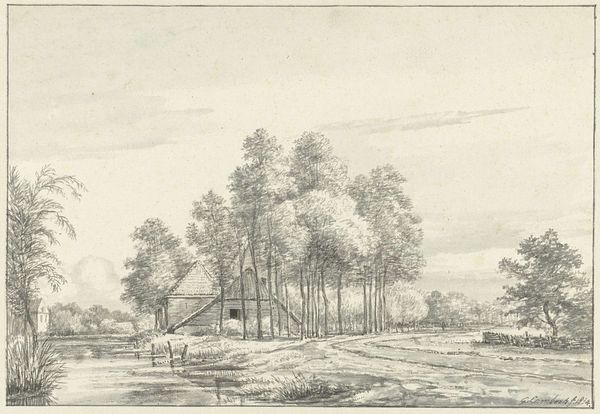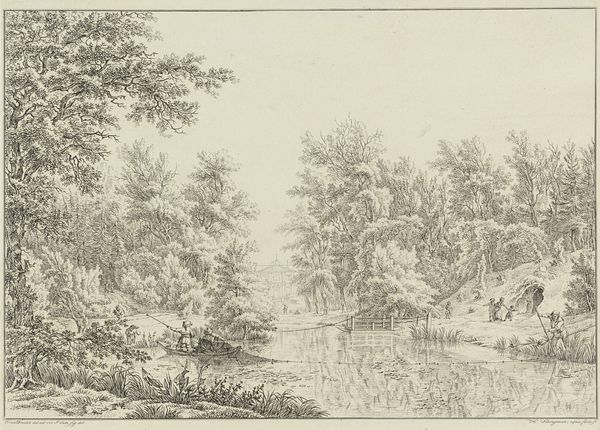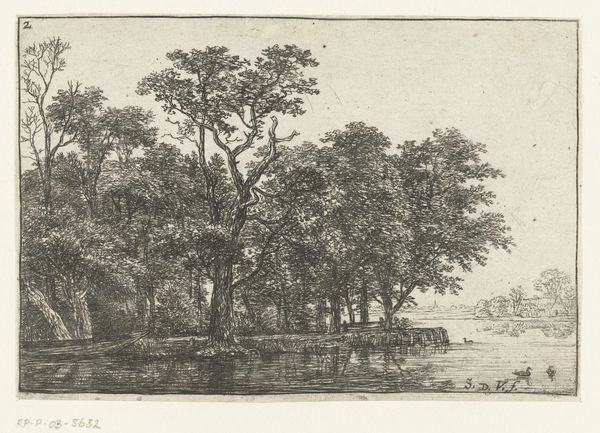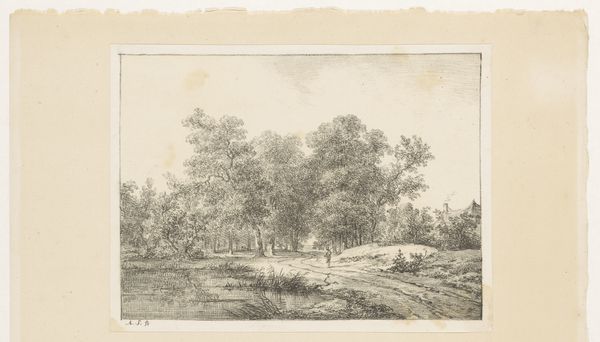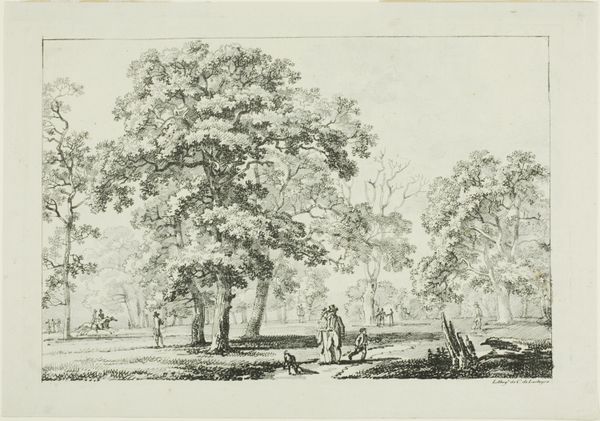
print, etching, engraving
# print
#
etching
#
landscape
#
etching
#
romanticism
#
engraving
Dimensions: height 170 mm, width 210 mm
Copyright: Rijks Museum: Open Domain
Curator: Here we have Ernst Willem Jan Bagelaar's "Landscape with pond and two anglers", an etching with engraving that likely dates from sometime between 1798 and 1818. What strikes you about it? Editor: It’s serene, almost melancholic. The monochromatic palette creates a hushed atmosphere, a quiet moment captured in time. The two figures fishing only reinforce this contemplative mood. Curator: I find the composition quite masterful. Notice the carefully placed trees which act as framing devices, drawing the eye towards the center and creating depth. The repetition of forms—the foliage, the reflections in the water—establishes a rhythmic quality. Editor: Yes, the balance is undeniable. However, it’s impossible to ignore the historical context. Who would have been afforded the leisure time to engage in angling in late 18th, early 19th-century Netherlands? Were there communal fishing ponds available, or would only landowners have benefitted from that opportunity? What about access for people of color and members of the LGBTQIA+ community at the time? I am intrigued by those whose stories are not obviously told here. Curator: While such points are relevant to a larger historical understanding, the formal qualities—the lines, textures created by the etching technique—work independently to create this sensation of tranquil isolation, quite distinct from contemporaneous, busier, landscape art. Look closely at the contrast between the darker foreground and the almost dreamlike haziness in the background. Editor: I see your point. The tonal range, for a black and white print, is actually quite impressive, evoking the sublime and idealized version of rural life prevalent in Romanticism. But the lack of specifics in the figures also speaks volumes about who was considered worthy of representation. I want to think about what a landscape means for displaced people with restricted mobility, about their relationship with the natural world. Curator: Certainly. We can acknowledge the formal beauty while remaining critical of its possible social implications. Both the aesthetic and historical frameworks contribute to a fuller appreciation. Editor: Indeed. Looking at the artwork in isolation versus thinking about who it serves in art historical narratives generates an interesting tension for a contemporary audience.
Comments
No comments
Be the first to comment and join the conversation on the ultimate creative platform.
